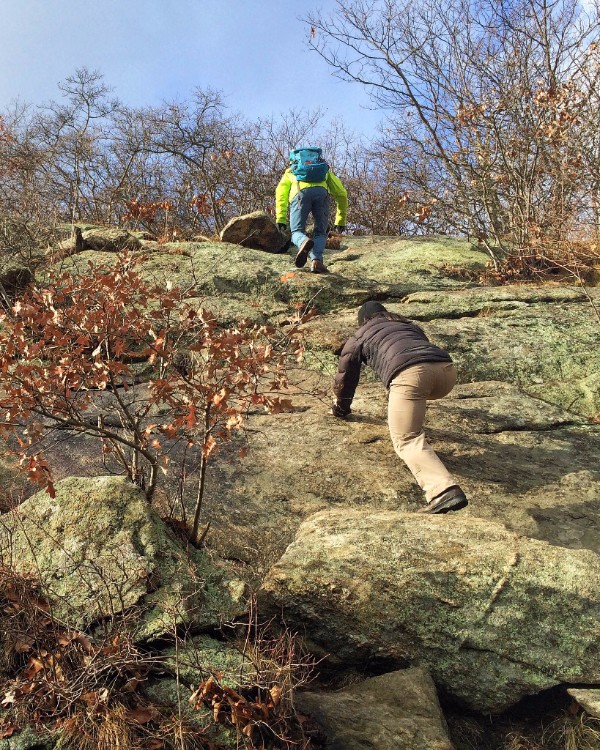Our mind melded with a few friends over the weekend and we all woke up craving a hike. So we bundled up and headed out to hike the Butter Hill/Stillman/Bluebird Trail Loop in Storm King State Park.
Hiking in the winter or spring requires a bit more thought than hiking in milder temps, so preparation started that morning when we got dressed. Layering is the name of the game here, and while this isn’t always the easiest advice to follow, avoiding cotton in lieu of synthetic materials is recommended for colder temps.
We threw on a base layer (we prefer tops and bottoms from Uniqlo’s Heattech line for days that aren’t too cold) topped with our favorite flannel button up, and made sure to grab a weather resistant jacket that’s easy to move around in. We wore stretchy jeans, a beanie that covers our ears, and threw a pair of gloves in our pack. The idea is to be able to peel off garments as your body temperature increases, which is what we did as we started the steep scramble at the beginning of the Butter Hill Trail. When we got to the top of the hill, the chill crept back in and we put our jacket on to enjoy the views of the Hudson River.
We also made sure to wear our best hiking shoes. While there wasn’t any snow on the trail yet (though that may change this weekend), we did encounter a lot of mud and ice, and we were grateful for the extra traction on some of the downhills that were slick from the previous day’s rain.
Easy prep tip to overlook: Bring plenty of water. This sounds obvious, but we often forget to drink enough in the cold weather even though it’s just as important to stay hydrated in January as it is in July. We also packed our headlamp in case our hike took longer than anticipated thanks to something unexpected along the way. Luckily we didn’t have to use our lamps, but we we were still happy to have them—because of these short winter days, we got off the trail just as the last light was fading.
Trip tip: ScrambleWe’re not talking about the eggs you’re eating for brunch. Many hikes in the northeast require some amount of rock scrambling or using your hands and feet to ascend a steeper-than-usual part of a hiking trail. The trails we hiked over the weekend marked the best path upward with blazes but if that’s not the case where you are, be sure to make a plan before you start to climb. Avoid loose rock and any areas that don’t have a lot of places for you to securely place your hands and feet. Next, be sure to keep at least three limbs on the rock as you move upward—so if one hand is reaching forward, leave the other where it is to help you balance and only move your feet when both hands are stable. We’d recommend sticking to the rock scrambles like the ones around Storm King or Breakneck Ridge while you’re getting used to the technique. Be careful out there! |

